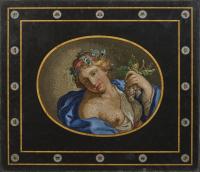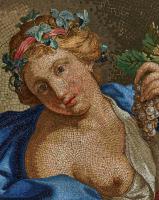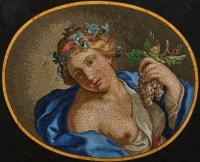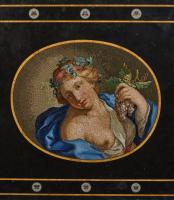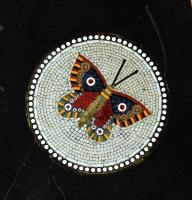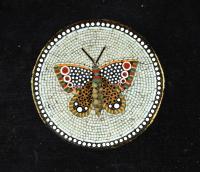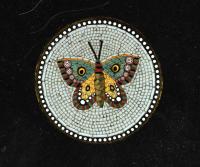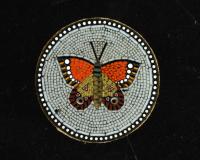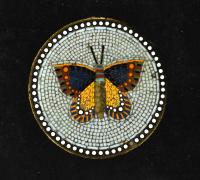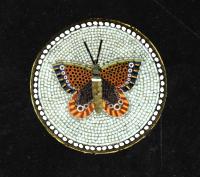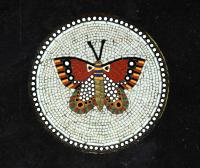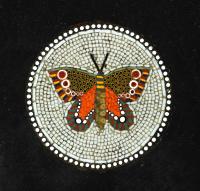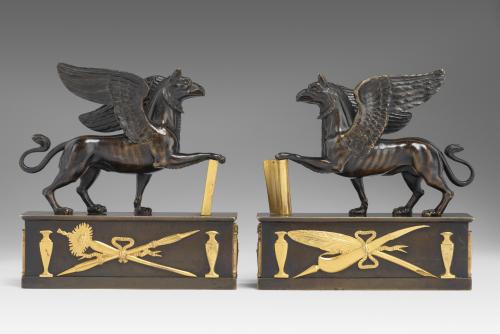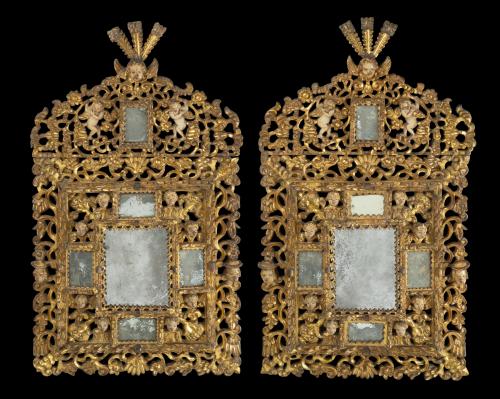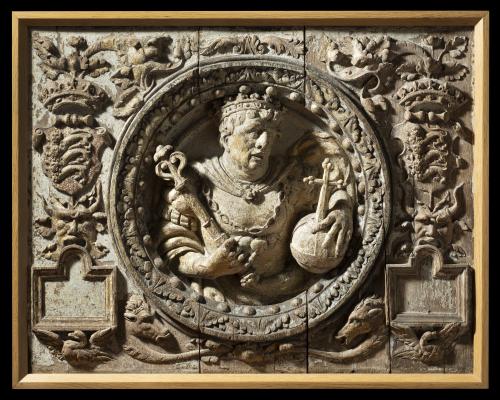
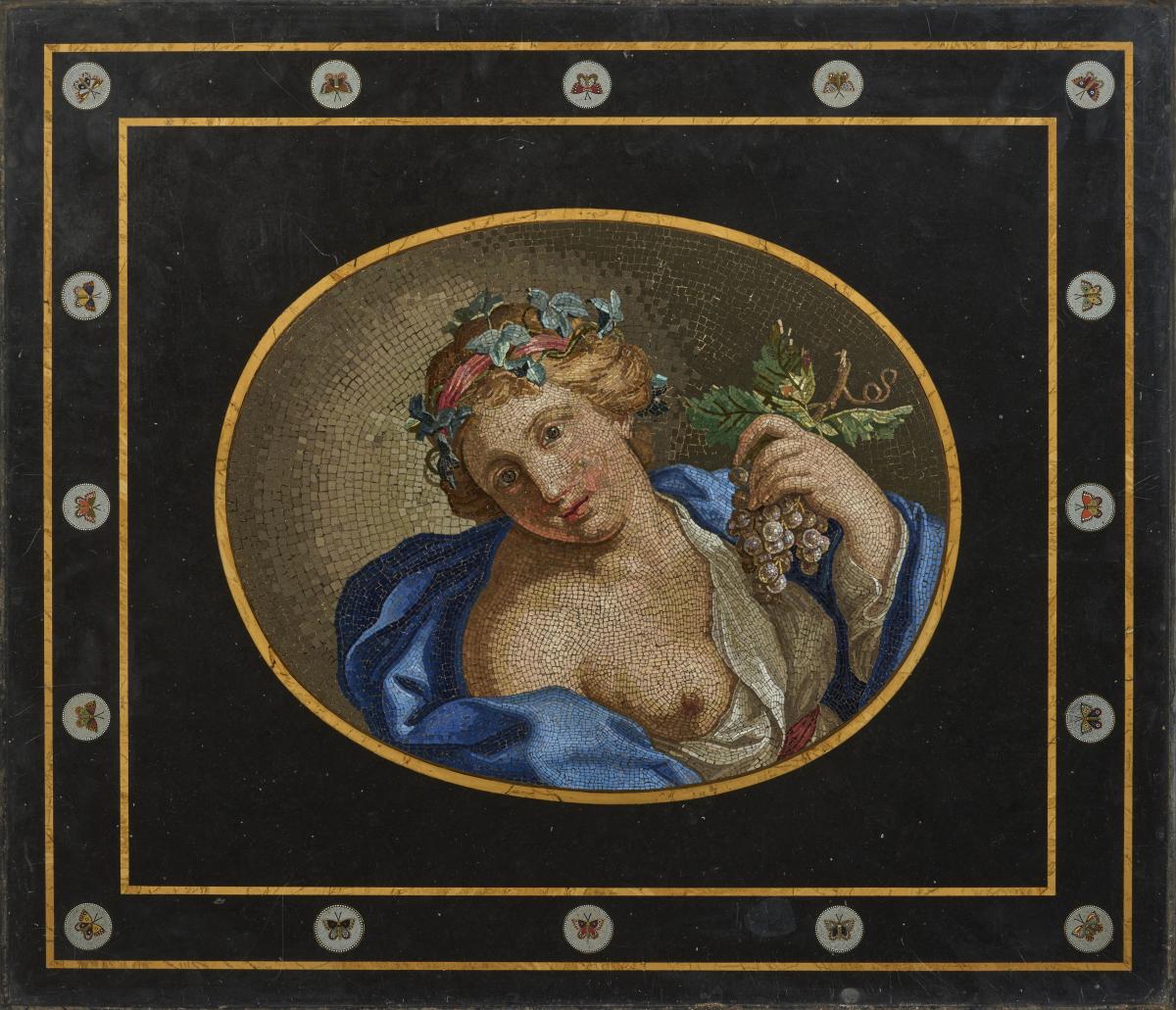
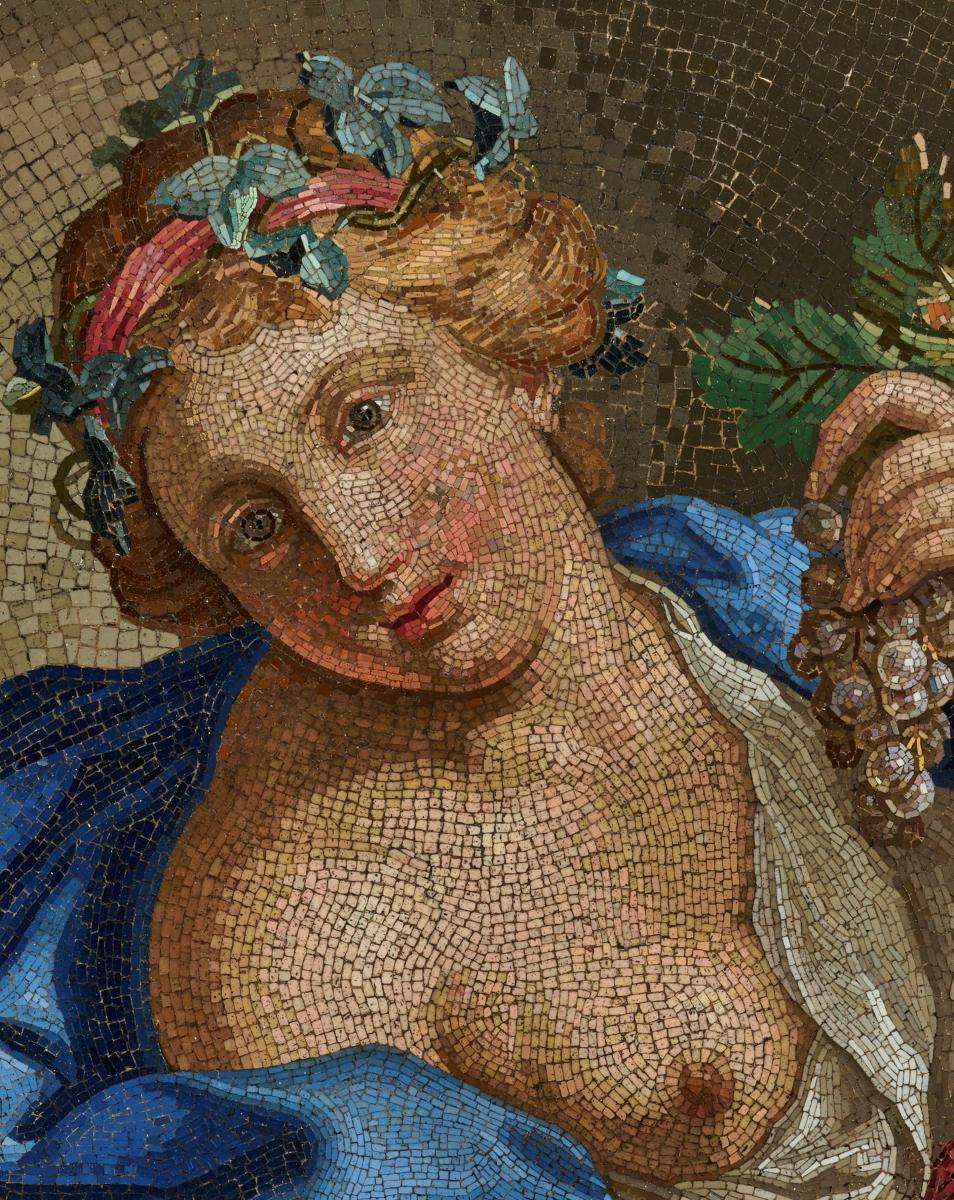
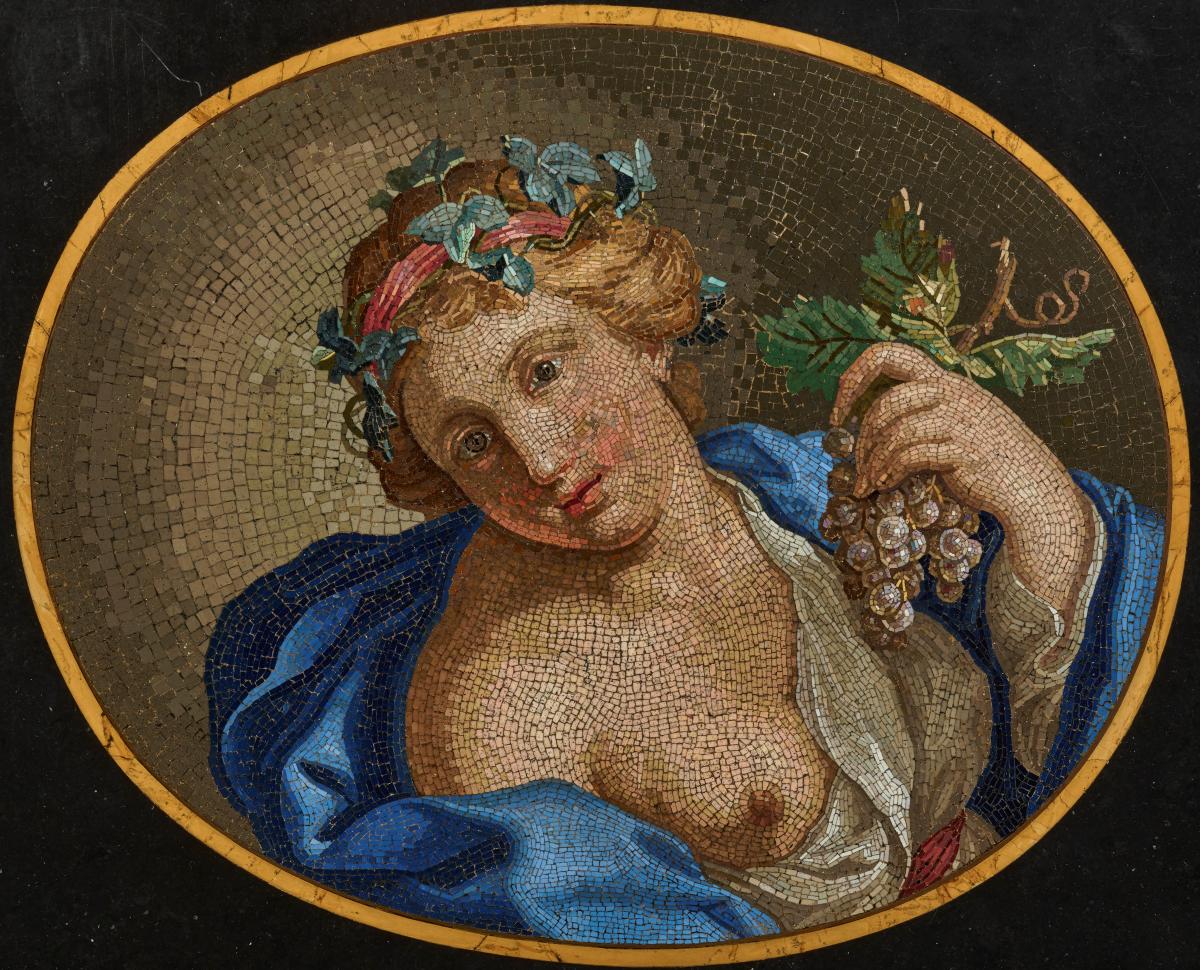
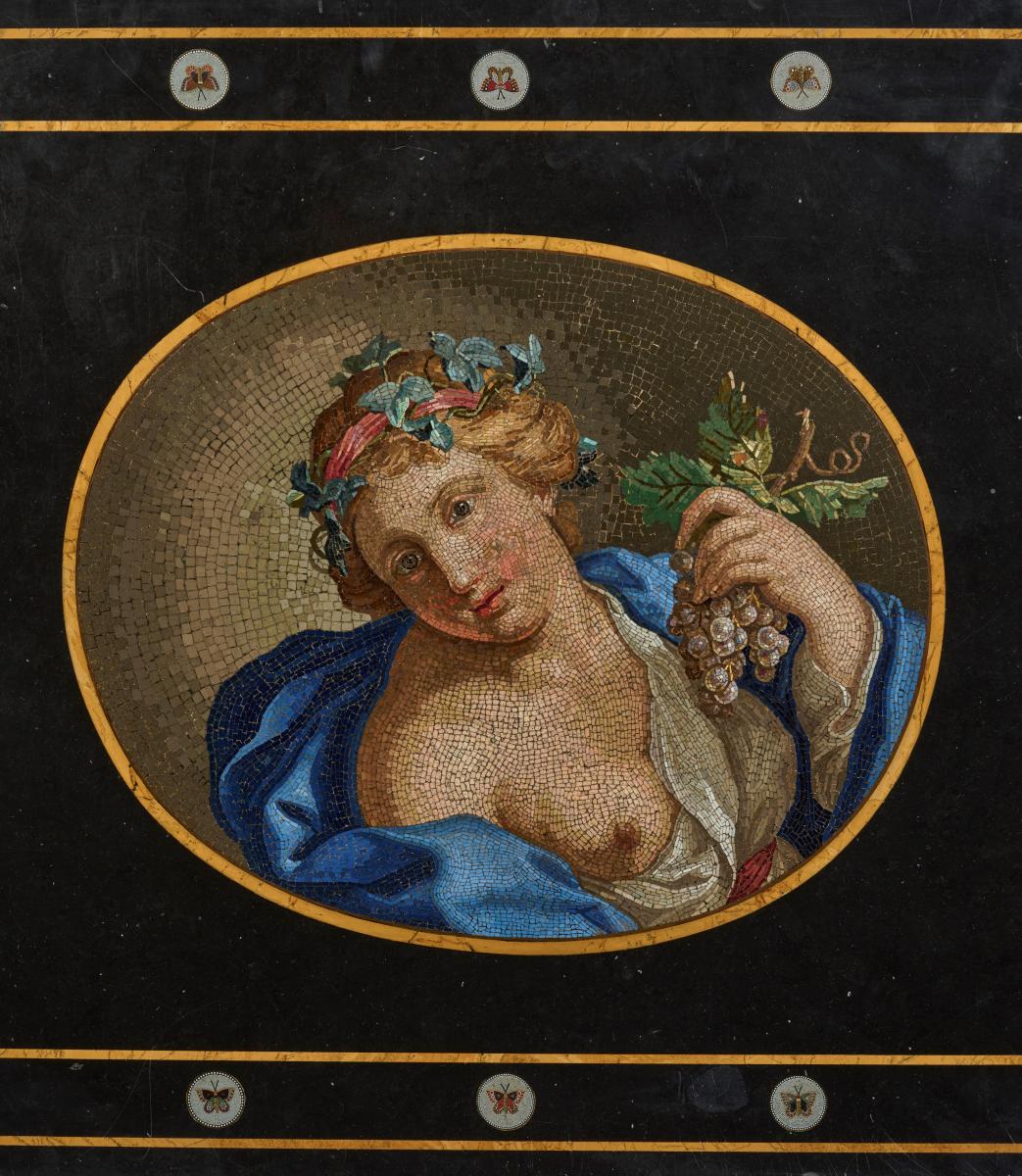
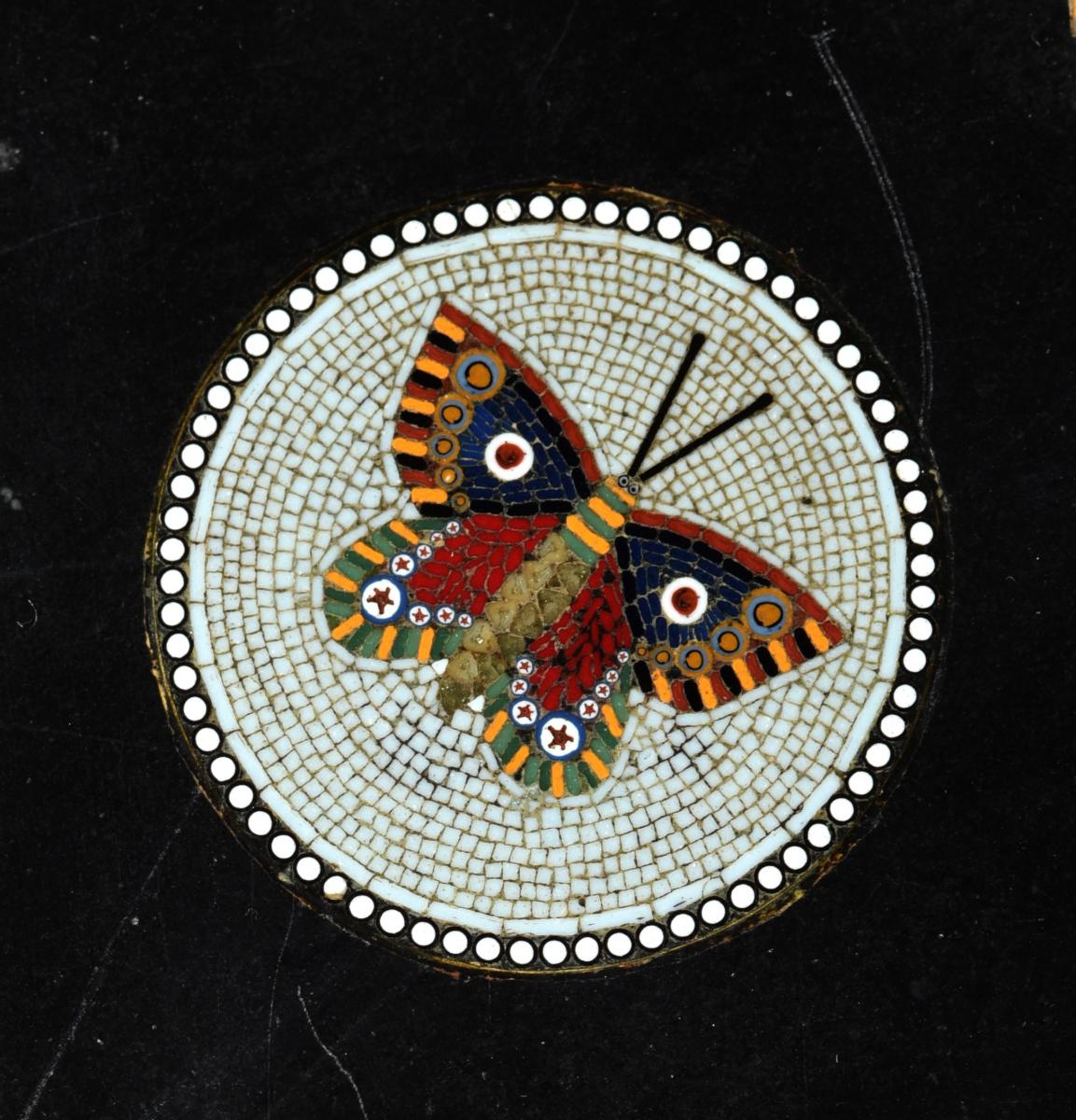
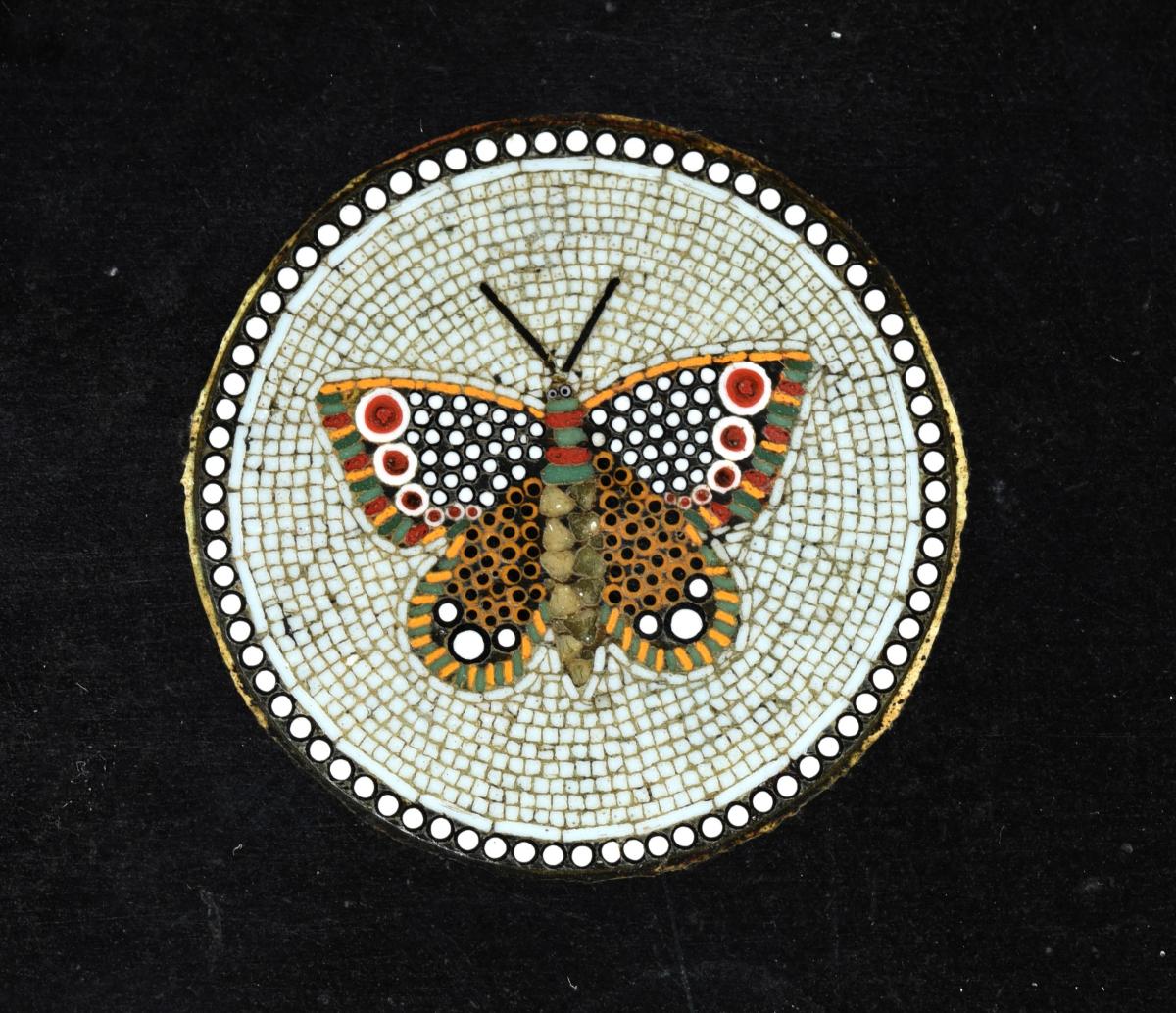
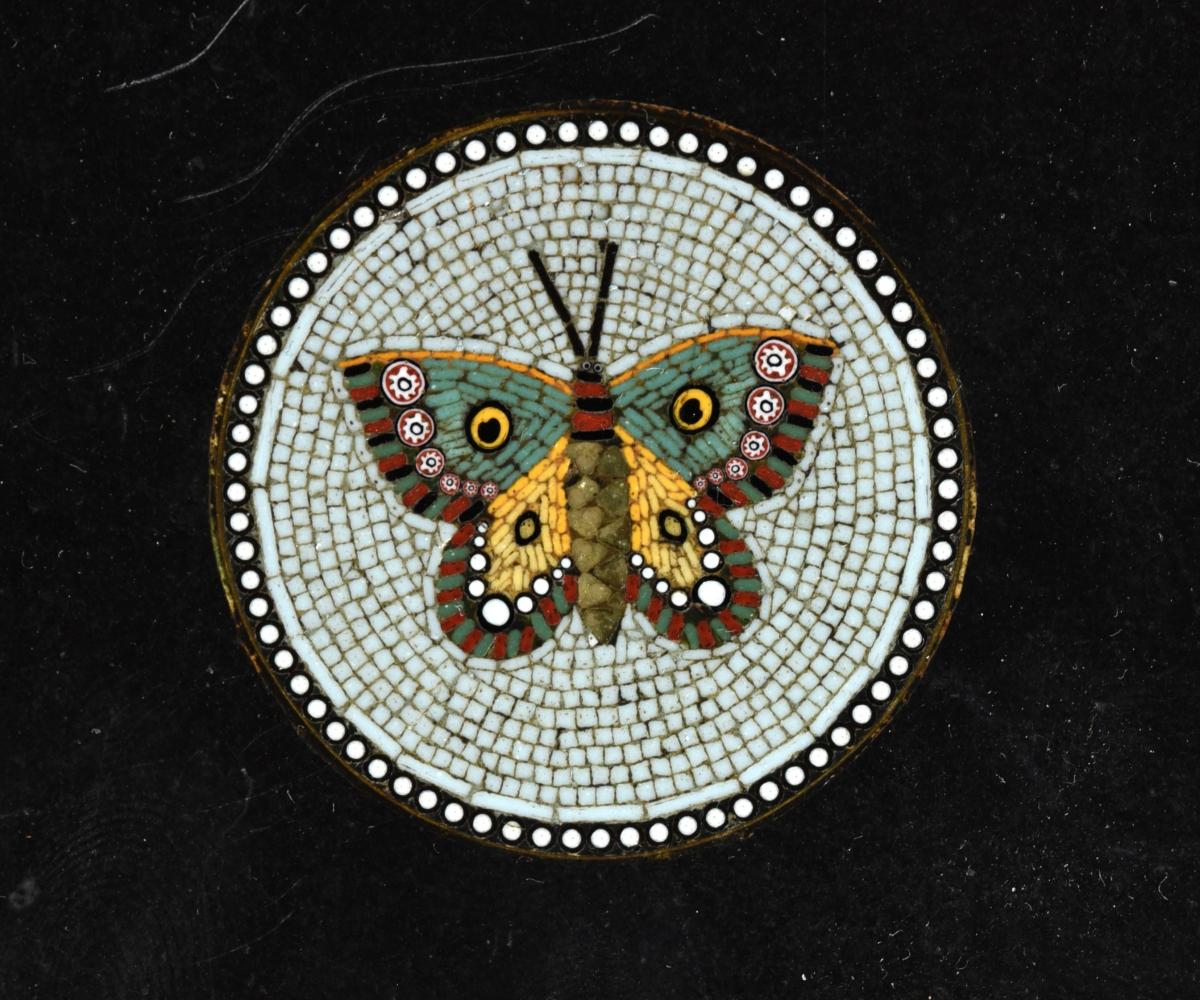
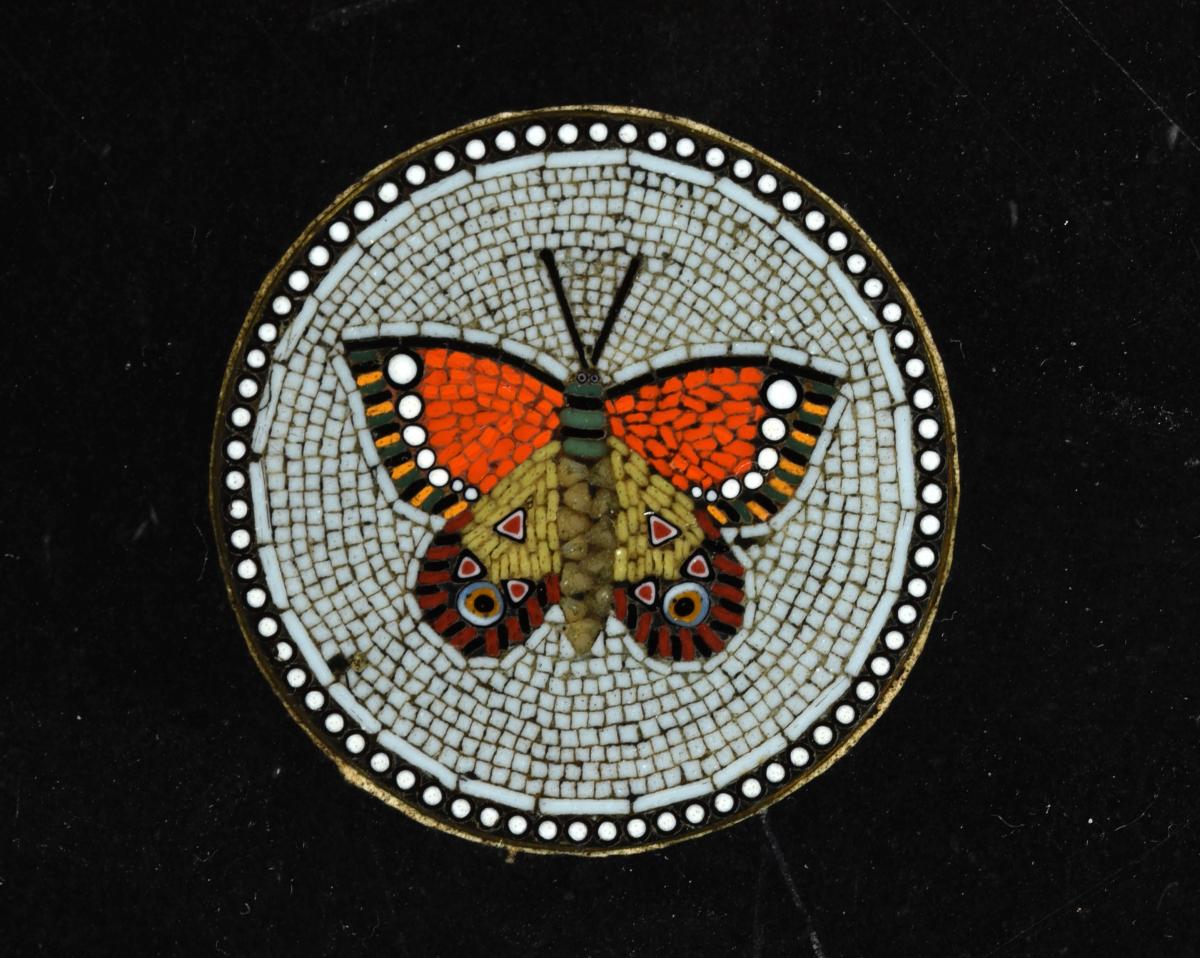
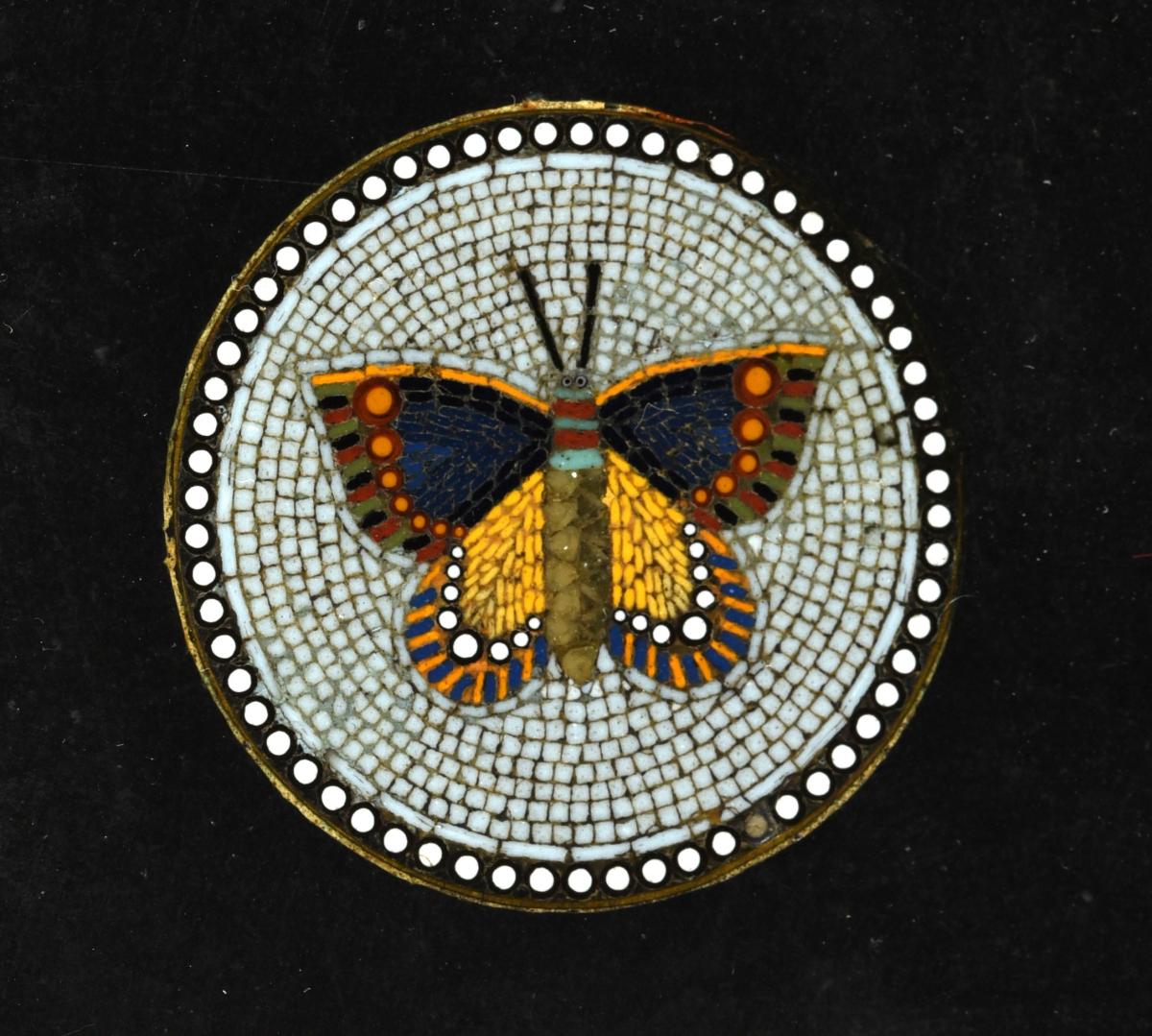
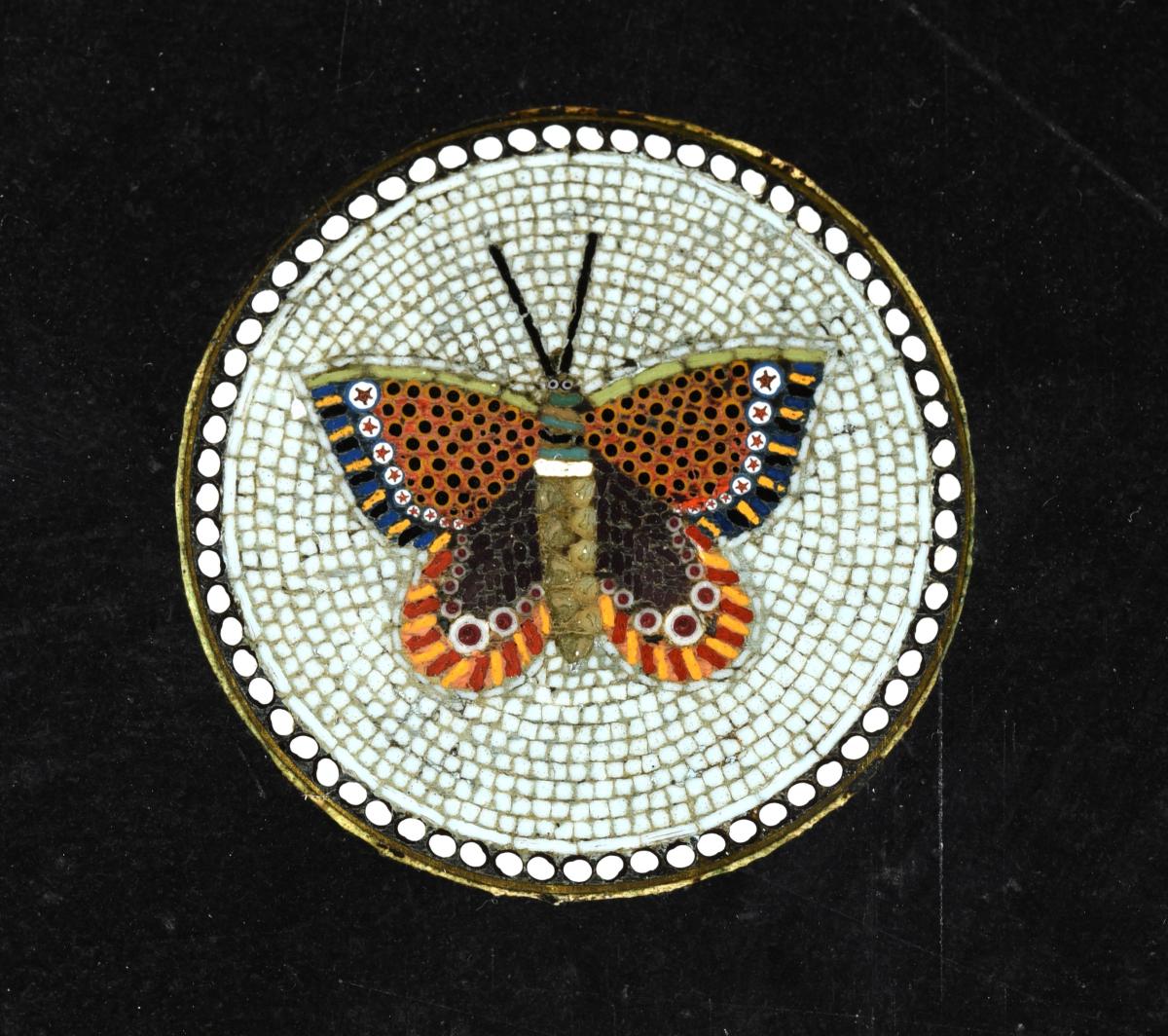
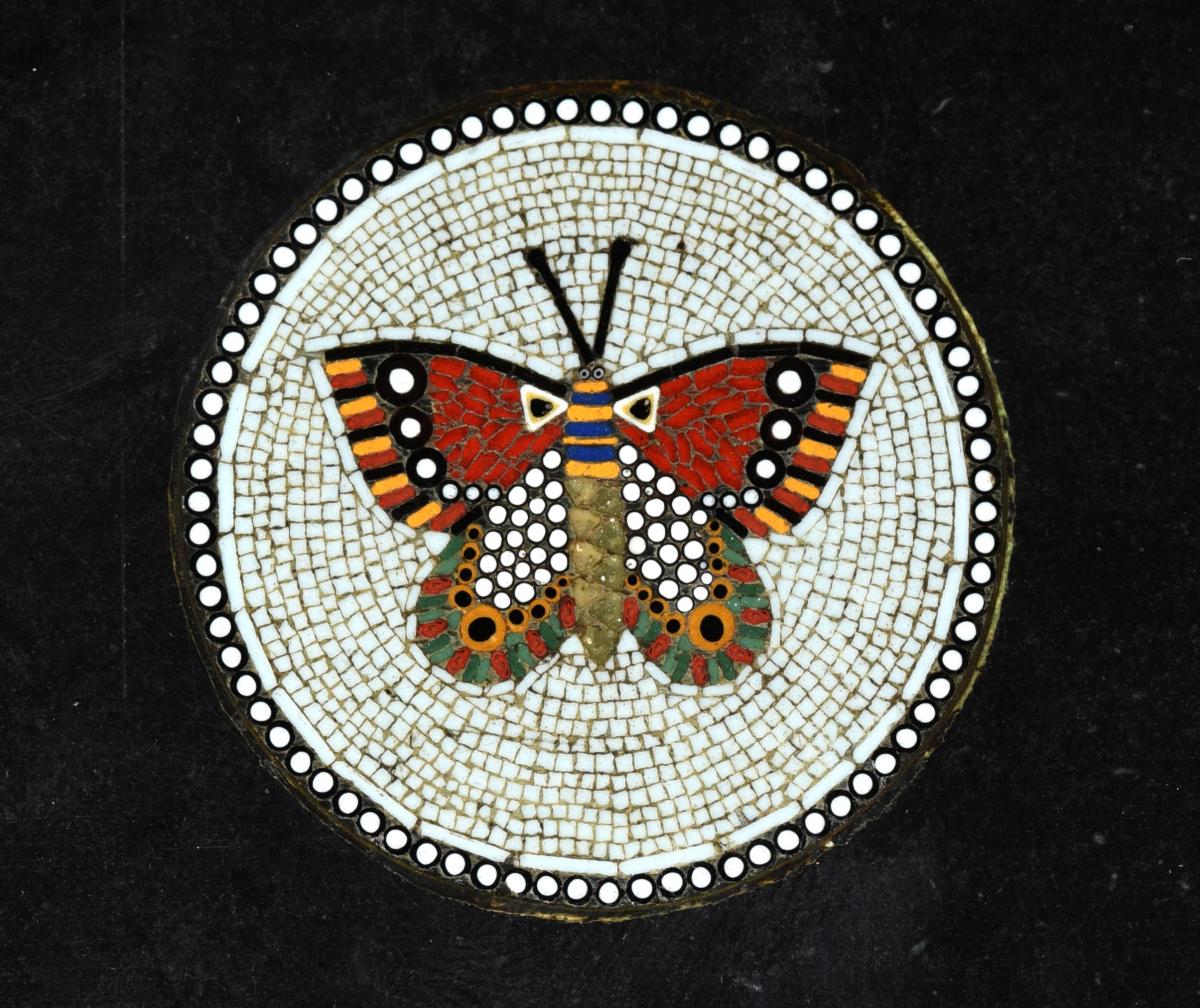
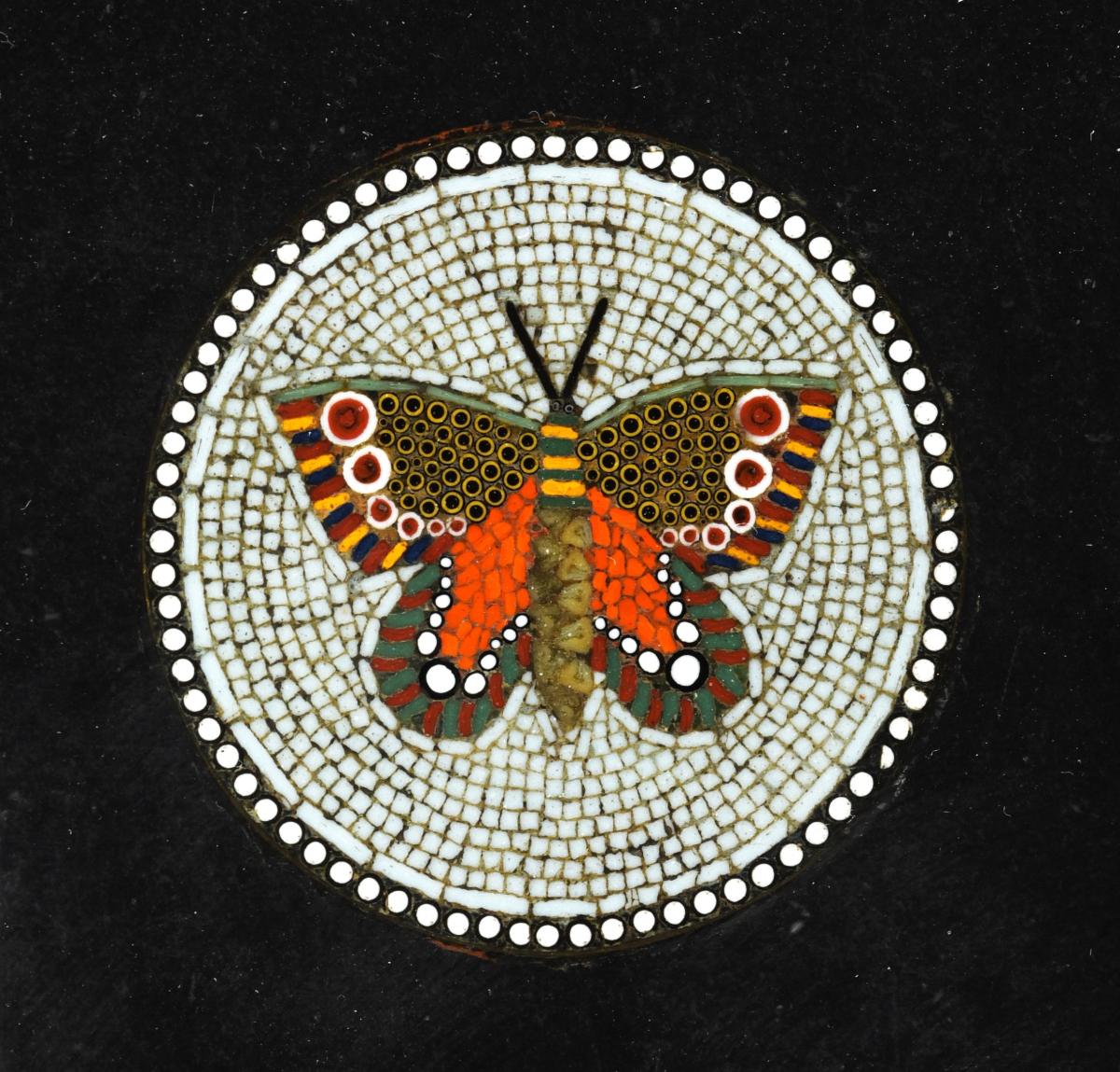
Price on application
This object is eligible for a Certificate of BADA Provenance
The BADA Standard
- Since 1918, BADA has been the leading association for the antiques and fine art trade
- Members are elected for their knowledge, integrity and quality of stock
- Our clients are protected by BADA’s code of conduct
- Our dealers’ membership is reviewed and renewed annually
- Bada.org is a non-profit site: clients deal directly with members and they pay no hidden fees
Attributed to Andrea Volpini (Rome doc. 1756-1812) and Giacomo Raffaelli (Rome 1753-1836) - Marble Panel centred with a Mosaic Depicting a Bacchante and surrounded by micromosaic medallions of Butterflies
Vatican Mosaic Workshop, Rome, Circa 1780-1790.
Rectangular panel in black marble inlaid with antique yellow edges that outline a series of spun mosaic and millefiori mosaic panels. The central oval panel showing a figure of a Bacchante portrayed in half-length and three-quarter view from the right, facing the viewer. The white dress and the flowing blue cloak that covers her shoulders leave her right breast exposed. In her raised left hand she holds a bunch of grapes. The classic hairstyle is tied within a pink band and adorned with vines. The background in brown/green tones fades towards the centre behind the figure's head, creating a luminous effect that gives depth to the composition. The mosaic panel is bordered in inlaid antique yellow. The external borders of the panel in antique yellow contain sixteen micromosaic plaques depicting butterflies.
The Roman Mosaics of the Eighteenth Century
Within the mosaic artists employed in the St. Peter Fabrica since the end of the 17th century, a profound transformation occurred at the beginning of the 18th century, due to the brilliant artistic and organizational skills of Pietro Paolo Cristofori which led, in 1727, to the establishment of the Vatican Studio of Mosaic.
The production of opaque glass pastes, activated in Rome from 1730 thanks to the discoveries of the chemist Alessio Mattioli, made it possible to obtain extremely effective pictorial results in mosaic.
The discovery encouraged the creation of mosaic copies of famous paintings for St. Peter’s. The mosaicists of the Vatican Studio were mainly involved in the decorations of the Basilica, both in the wall mosaics and in the creation of large altarpieces. However, from the 1790s, the production of smaller wall mosaic panels began, used by the Pope as diplomatic gifts, with the aim of promoting mosaic art, particular to the ‘sanpietrini’ artists showing the high technical level achieved in the Vatican workshop. This custom reached its peak in the years of the pontificate of Pope Pius VI Braschi (1775-1799).
An unexpected novelty of this period is the adoption of profane subjects in the context of the Vatican production which was becoming increasingly secularized with the intention of addressing a larger and more international clientele. A series of panels with portraits of illustrious personalities or mythological and allegorical themes belong to this trend and their execution dates back to mosaicists paid by the Vatican Studio or provided by external mosaic studios. An early example of this production dates from 1750: the mosaic portrait of Empress Elizabeth Petrovna (1709-1761) created by Alessandro Cocchi (St. Petersburg, Hermitage Museum).
In 1793 the creation of small mosaics was given official status in the Vatican. This initiative marked a turning point in the production of the workshop which could diversify from the traditional and exclusive processing of the 'large mosaic'. This decision was made as the mosaic work for the Vatican Basilica neared completion. The great demand for mosaic souvenirs within the Roman art market linked to the phenomenon of the Grand Tour was decisive for the survival of the Vatican manufacture.
Andrea Volpini (Rome doc. 1756-1812) and Giacomo Raffaelli (Rome 1753-1836)
Andrea Volpini (active 1756-1814), was an esteemed mosaicist to whom in 1773 the Vatican Studio had already commissioned a mosaic depicting the Persian Sibyl, taken from Guercino's painting in the Capitoline Museums, donated to Gustav III of Sweden in 1784.
In 1791 Volpini was paid for two mosaics representing the Colosseum and the Temple of Minerva Medica. In 1792 there is evidence of payment for a head of Flora, or allegory of spring (Private collection, Fasto Romano), taken from a painting by the painter active in St. Peter’s, Francesco Mancini. The mosaic shows some similarities with the head of this Bacchante both from a stylistic point of view and technical rendering. The two may have been conceived together as allegories of the seasons.
The pictorial model for this Bacchante also belongs to this area, and the mosaic execution could be linked to the activity of Andrea Volpini's studio. It is possible that this Bacchante is also taken from a painting by Francesco Mancini. No firm evidence has been found for the commissioning of this panel by the Vatican Studio to Volpini, however the characteristic features of the figure of the Bacchante leave no doubt about the execution of this mosaic as part of the production profoundly influenced by the taste and orientations of the Vatican workshop in the late eighteenth century.
In the late eighteenth century the Vatican mosaicists drew on the artists active in Rome and involved in sanpietrine decorations, who trained alongside prominent personalities such as Carlo Maratta (1625-1713), displaying an opulent style based on the classicist tradition of the Raphaelesque. Artist like Giuseppe Bartolomeo Chiari (1654-1727), Francesco Trevisani (1656-1746), Benedetto Luti (1666-1724), Sebastiano Conca (1680-1764), Francesco Mancini (1679-1758) defined the Roman pictorial style of the eighteenth century characterized by a moderate Rococo which significantly influenced contemporary figurative mosaic production, which probably inspired this Bacchante.
Specific comparisons can also be found, in the mosaics of the chapel of the Presentation of the Blessed Virgin based on cartoons by Carlo Maratta and Giuseppe Bartolomeo Chiari, or in the mosaic of the Chapel of the Madonna of the Column whose cartoons were entrusted to different painters, including Francesco Mancini.
The pictorial model for this Bacchante also belongs to this area, and the mosaic execution could be linked to the activity of Andrea Volpini's studio. It is possible that this Bacchante is also taken from a painting by Francesco Mancini. No firm evidence has been found for the commissioning of this panel by the Vatican Studio to Volpini, however the characteristic features of the figure of the Bacchante leave no doubt about the execution of this mosaic as part of the production profoundly influenced by the taste and orientations of the Vatican workshop in the late eighteenth century.
The relationship between Andrea Volpini and the Vatican Studio had become continuous starting from 1797, when he was listed the employed mosaic artists with a monthly salary of 6 scudi. However, he never stopped working independently together with his son, Michelangelo. The collaboration between his mosaic studio and that of Giacomo Raffaelli can be traced through documents (Massinelli, 2018). Two tables described by Guattani in Volpini's workshop, identified with a pair of mosaic tops in Syon House, are set on ornamental patterns attributable to Raffaelli.
Upon his departure for Milan, Raffaelli brought with him a mosaicist named Gaetano, an assistant in Volpini's studio. The documented exchanges between the Volpini’s and Giacomo Raffaelli, to which the series of medallions with butterflies in the present panel are linked, may be an element in support of the attribution of this work to the collaboration between two of the most qualified Roman mosaicists of the late eighteenth century.
Butterflies and scientific illustration
Since ancient times, butterflies have been associated with spring, becoming a symbol of graceful beauty and rebirth. These creatures were also associated with immortality, love, loyalty and happiness. Therefore they are well associated in this panel with the central image of the Bacchante.
Giacomo Raffaelli had carefully investigated the figurative world linked to scientific and animalistic illustration which would become a formidable source of ideas and models for him. Between the volumes documented in his private library, we can in fact identify the iconographic roots of the vast and successful trend that characterizes much of his mosaic production such as the Histoire Naturelle, générale et particulière by Georges-Louis Leclerc, count of Buffon (1707–1788) which were widely distributed at the end of the eighteenth century and whose illustrated tables served as models in various decorative contexts.
Raffaelli's students also practiced on the theme of the butterfly in the mosaic school of San Vincenzino in Milan, as can be seen from various indications contained in the inventory of objects brought back to Rome in 1821 in which the vast didactic production is exemplified, for example, in the description of the box containing among other things: 'n. 16 mosaics of ordinary butterflies of different figures made by the young students’.
Among the oldest known is the large family of the papilionoidea to which the nymphalidae belongs with the so-called 'peacock eye' subspecies due to the characteristic circular spots that recall the 'eyes' on the feathers of the peacock tail. These are masterfully reproduced in the present mosaic medallions through the so-called millefiori mosaic technique.
Technique and materials
Spun enamels – Smalto filato
This is a method used to make very small tesserae of glass. To do this, the opaque glass colours were pulled out while the glass was hot obtaining tiny threads or canes that could then be cut into micro-tesserae required to compose the mosaic.
Smalto Millefiori – Thousands Flowers
This is a name given to a method that goes back to the classical world in which patterns were made by fusing together canes of different coloured glass to create a cane that had the same pattern all the way through and could be sliced to give a ready-made pattern. The canes or threads of glass of different colours were arranged vertically, side by side, heated until they fused and then cut to obtain tesserae of uniform design.
We are grateful to Anna Maria Massanelli for this description. A comprehensive essay is available on request.
Dimensions
67.6 x 77.2 x 3.4 cm Including frame: 70 x 79.5 x 5.9 cmWeight
70kgStock number
7049The BADA Standard
- Since 1918, BADA has been the leading association for the antiques and fine art trade
- Members are elected for their knowledge, integrity and quality of stock
- Our clients are protected by BADA’s code of conduct
- Our dealers’ membership is reviewed and renewed annually
- Bada.org is a non-profit site: clients deal directly with members and they pay no hidden fees


